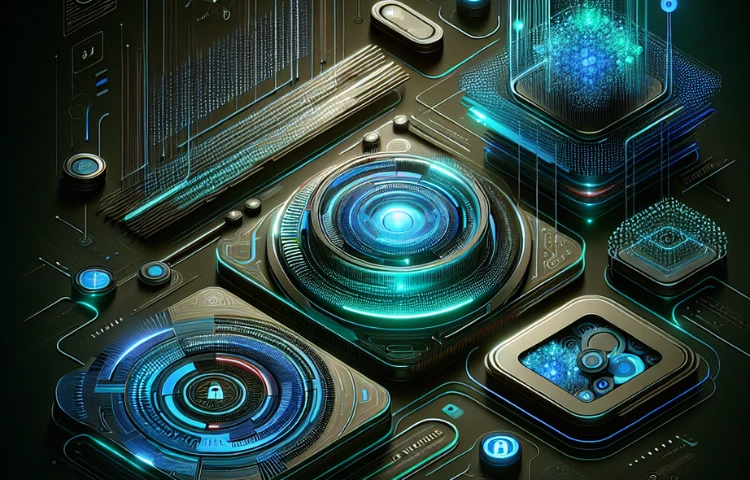

Prefer to listen instead? Here’s the podcast version of this article.
In the fast-evolving world of artificial intelligence, Anthropic’s Claude 2.1 is making waves for its emphasis on safety, transparency, and user customization. As tech giants race to develop increasingly powerful AI models, ensuring these systems operate ethically and safely has become paramount. Claude 2.1’s advancements reflect a step forward in building AI systems that prioritize user safety and aim to reduce risks like biases and hallucinations—issues that often challenge the AI industry.
In this post, we’ll dive into the key advancements of Claude 2.1, why they matter for the future of AI, and how Anthropic’s safety-first approach is pushing the industry to reconsider its standards for developing intelligent models. To explore more on how AI safety is shaping our world, visit the [Quantilus blog] for more insights into ethical and transformative tech innovations.
One of the standout features of Claude 2.1 is its impressive 200k token window—nearly doubling the token capacity of other advanced models like OpenAI’s GPT-4 Turbo. But why does token capacity matter? A larger token window allows Claude to process and understand significantly more data at once, which is beneficial for complex tasks like summarizing long documents or analyzing extensive data in one go. With 200k tokens, Claude 2.1 can handle inputs nearly as long as entire books, making it a powerful tool for applications requiring context-rich responses.
A crucial part of Claude 2.1’s development is its focus on minimizing hallucinations—a term in AI referring to the phenomenon when a model generates incorrect or misleading information. Hallucinations are a persistent challenge in AI as they undermine trust in the model’s outputs, especially when users rely on AI for critical information.
To tackle this, Anthropic utilizes Reinforcement Learning from Human Feedback (RLHF), a training technique where human responses guide the model in learning to provide more accurate and relevant information. This feedback loop is particularly essential in sensitive applications like healthcare, law, and finance, where misinformation can have severe consequences. Anthropic’s dedication to reducing hallucinations aligns with the industry’s broader push for responsible AI.[Learn more about Anthropic’s commitment to safe AI practices here].
Unlike many other AI models, Claude 2.1 places a strong emphasis on user safety and customization. Anthropic provides users with more control over model behavior, enabling them to fine-tune Claude’s responses to suit specific needs. This feature is particularly useful in enterprise settings where tailored AI interactions can enhance productivity while respecting user guidelines and ethical considerations.
Anthropic’s Claude models have also introduced a more granular control over data privacy and security, a critical feature in today’s data-sensitive environment. Enterprises can configure Claude’s settings to ensure user data is handled with strict privacy protocols, reducing risks associated with sensitive data breaches. For further reading on the intersection of AI and privacy, check out this insightful piece on the ethical challenges of AI.
Anthropic’s focus on safety sets it apart from other industry players. With companies like Google DeepMind and OpenAI dominating headlines, Anthropic’s approach provides a refreshing alternative that prioritizes responsible AI development. By leveraging investments from Google and Amazon, Claude is positioned as a competitor that not only matches but potentially exceeds in performance and safety protocols.
Claude 2.1’s context window surpasses that of OpenAI’s GPT-4, which tops out at 128k tokens, making Claude suitable for businesses that need in-depth analysis of large datasets without sacrificing safety. To understand how Anthropic’s innovations stack up, compare Claude and GPT models in this detailed analysis.
As governments and organizations worldwide draft guidelines for AI governance, models like Claude 2.1 serve as examples of how AI can advance responsibly. With the recent AI Safety Summit in the UK, where leaders from government and industry discussed AI’s future, Anthropic’s efforts in aligning Claude’s capabilities with ethical AI practices have gained considerable attention. The industry-wide emphasis on AI safety reflects a shift toward accountable AI practices that prioritize public well-being.
Anthropic’s continued focus on creating user-friendly, safety-centric AI models is a benchmark for future AI developers. By making these improvements, Claude 2.1 is setting standards for transparency and user control in AI that could become norms as ethical AI development gains traction.
Claude 2.1’s advancements reflect a paradigm shift toward safer, more accountable AI systems. As AI continues to permeate all facets of life, models that combine cutting-edge performance with a commitment to safety are likely to set the standard for future AI innovations. Anthropic’s emphasis on user control, ethical practices, and privacy protections signals a promising direction for the industry.
WEBINAR